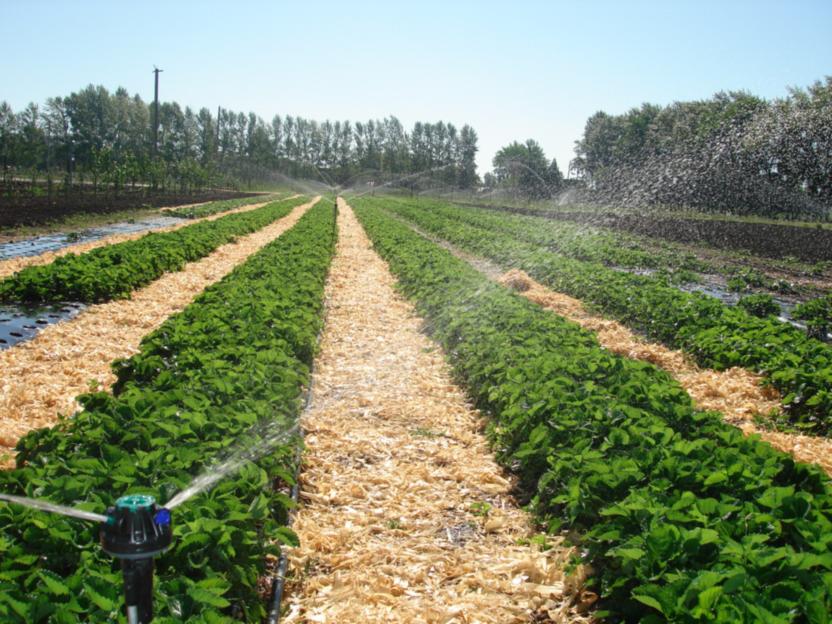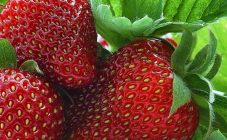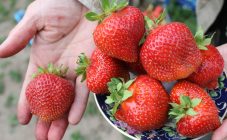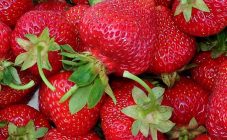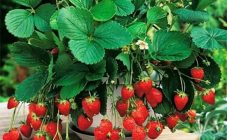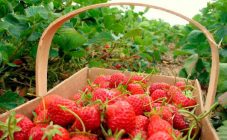Content:
Strawberries are traditionally considered a summer delicacy, but today breeders have managed to develop varieties that are capable of bearing fruit until the first frost. One of the representatives of this variety is Vima Rin's remontant strawberry, which is distinguished by its sweet, large and tender berries. For the successful cultivation of this variety on a personal plot, you must first familiarize yourself with the basic rules of agricultural technology.
General information and characteristics of the variety
Wim Rin's strawberries belong to the group of Dutch varieties. It was obtained as a result of research and crossing of Wim Zanda and Vikonda berries. The experiments were carried out in Holland by scientists at Visser. Today the variety is not popular with gardeners for its high yields, late berry setting and weather resistance, and fungal infection.
The strawberry variety Vima Rina belongs to the large-fruited group, since the average weight of the berry is at least 40 g. Sometimes there are specimens whose weight is 2 times the indicated figure. The fruits have a conical, slightly elongated shape and a well-defined neck. Strawberries have a glossy skin that is adorned with small seeds. As the berry ripens, it will gradually acquire a red tint, as well as soft, but, at the same time, dense pulp. The culture tastes sweet and sour. The tasters gave her a rather high mark, which is 4.8 points out of 5. Strawberries have a pronounced aroma.
Among the main characteristics of culture, several can be distinguished:
- the Vima Rina variety is late-ripening - the first wave of the crop ripens in early July, and can continue until the onset of frost;
- the culture begins to bear fruit after one year, after it was planted in the spring;
- the variety is frost-resistant, it is not afraid of winters in the central regions of Russia, as well as resistance to dry weather and high temperatures;
- from one bush, on average, you can collect up to 800 g of the crop for the entire vegetative period;
- for 4 years, the culture can feel great in one place and not reduce the level of yield;
- high level of resistance to common diseases;
- one of the main features of this variety is the slight formation of antennae, which in turn facilitates the care of strawberries, but can become an obstacle in the breeding process.
Wim Rin's strawberries are a variety of neutral daylight hours. This suggests that the formation of fruit buds in the plant occurs almost every month. The fruits are actively developing for 2-3 weeks. Weather conditions and daylight hours have no effect on how generative buds will be laid. As for the temperature, it can vary from 5 to 30 ° C.
Growing features
The growth and development of strawberries directly depends on how correctly the planting rules are followed. For planting seedlings, it is necessary to give priority only to those places where the sun's rays penetrate well or on small slopes. The ideal direction would be the southwest and south sides. A small shade in the garden bed will not affect the formation of ovaries, but the strawberry yield will decrease significantly and the berries will not be as sweet.
When choosing a planting material, attention should be paid to several important parameters:
- the structure of the bushes must be fully formed and have at least 4 sheets;
- leaves should be bright green, no injuries, damage and traces of diseases are allowed;
- the roots are fibrous, and their length is usually about 7 cm.
If in the region where it is planned to plant strawberries, the fact of the return of frosts is often recorded, then preference should be given to planting in the fall, which is carried out from August to September. Seedlings should be planted 14 days before the pre-frost. During this period of time, the strawberries will completely root and form flower buds, and with the onset of spring they will enter the phase of active growth.
When planting a crop, one should adhere to the traditional scheme, which indicates that a distance of at least 45 cm should be maintained between the bushes of the variety.This is done in order to prevent excessive plantation density and sufficient sunlight necessary for the development of berries. The distance between the holes should be 50 cm. Planting involves following a step-by-step process:
- The seedlings need to be sorted out, dried foliage removed and the root system shortened to 8 cm.
- Dig holes, the size of which should be clearly 25 by 25 cm.
- If fertilizer is not first applied, then it must be added to the planting holes and thoroughly mixed with the soil.
- Sprinkle each well with plenty of water.
- The seedlings are placed in holes with a strict downward direction of the root system. The core must be above the ground.
- The soil around each bush should be compacted so that air can circulate well at the roots.
- After all the above actions, the strawberries must be watered again, avoiding water getting into the core of the bush.
- The final step will be to mulch the plantation using dry land or straw. This is done in order to retain moisture in the soil for a more successful rooting.
The main distinguishing feature of strawberries is represented by their superficial root system, which does not have the ability to draw sufficient groundwater. For neutral varieties, including Wim Rin, watering is a source of strength, helping to set the future harvest. The first watering should be done in the second half of April, if the weather is dry and warm.
From May to June, the soil under each strawberry bush must be moistened at least 7 times.In the period from August to September, the frequency of watering is halved, and the rate of water consumption is considered to be 10 liters per 1 m². Before carrying out irrigation work, you need to familiarize yourself with the weather forecast.
Qualitative development and fruiting of strawberries provides for the implementation of agrotechnical methods. After each watering, the soil around the seedlings must be loosened, destroying the earthen crust and providing an air flow to the delicate roots. Mulching is an obligatory measure when growing a crop, which retains moisture, and also acts as an obstacle to the appearance of weeds. The soil that has been mulched significantly reduces weeding and loosening, making it easier for gardeners to care for strawberries. Mulch helps to protect the crop from rot and dirt.
Advantages and disadvantages of the variety
When growing the Vima Rina variety, certain advantages and disadvantages of the berry were established in front of their "brothers". The advantages include:
- the variety has good immunity;
- large berries with excellent taste;
- the crop is resistant to transportation, drought and severe frosts;
- fruiting lasts for a long period of time.
The only drawback of this variety is that strawberries have almost no antennae, and this slows down the reproduction of the plant.
In any case, it is worthy of planting even by a novice gardener. But in order to achieve a large harvest, you need to follow the instructions described above.

